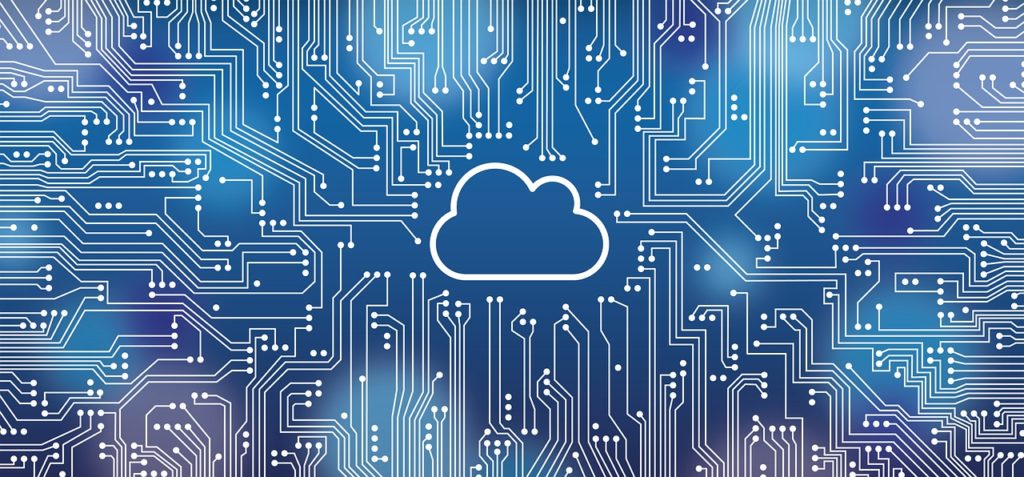If you would like to read the other parts in this article series please go to:
- Getting Started with AWS (Part 2)
- Getting Started with AWS (Part 3)
- Getting Started with AWS (Part 4)
- Getting Started with AWS (Part 5)
- Getting Started with AWS (Part 6)
- Getting Started with AWS (Part 7)
- Getting Started with AWS (Part 8)
- Getting Started with AWS (Part 9)
- Getting Started with AWS (Part 10)
- Getting Started with AWS (Part 11)
- Getting Started with AWS (Part 12)
- Getting Started with AWS (Part 13)
- Getting Started with AWS (Part 14)
The cloud computing business is exceedingly dynamic. Until recently Amazon has been the dominant player with their Amazon Web Services (AWS), but Microsoft is quickly catching up with their Microsoft Azure and has already surpassed AWS in some areas. New features are being released for both of these cloud platforms at an accelerating rate, and as a result any close examination of these cloud services is bound to need to be periodically revisited to remain up to date.
Of course the best way to become familiar with a cloud provider’s offering is to get some hands on experience using it. This new series of articles is designed to help you become familiar with AWS and several of its core services. As we progress through this series you’ll learn what AWS can do and what it can’t do, what its strengths are and what its weaknesses are. The knowledge and especially the experience you gain through these articles can help you evaluate whether AWS might be a good fit for your business or whether you should consider opting instead for a competitor like Microsoft Azure. The bottom line is that only you can make the right decision about which cloud platform is best for addressing the needs of your business.
AWS Free Tier – Description
Amazon makes it easy for you to try out AWS by offering everyone a free usage tier that lets you test drive 18 different products and services at no charge for a period of 12 months. The products and services you can try out for free (up to certain usage limits each month) using this tier include:
- Amazon EC2 compute services which you can use to run instances of Windows Server and Linux in the cloud.
- Amazon EBS (Elastic Block Store) which provides you with block level storage volumes you can use with your server instances running in Amazon EC2.
- Amazon S3 (Simple Storage Service) which provides you with a fully redundant cloud-based storage infrastructure you can use for storing and retrieving data from anywhere on the Web.
- Amazon RDS (Relational Database Services) and Amazon DynamoDB, which respectively provide you with fully managed relational and NoSQL database services.
- Plus some additional compute, storage, networking, content delivery, and application services.
For a high level overview of what you can do with the free usage tier, see https://aws.amazon.com/free/.
For a more detailed description of the free usage tier plus answers to common questions, see the FAQ at https://aws.amazon.com/free/faqs/.
For a brief explanation of each AWS product or service (including those not included in the free usage tier) see https://aws.amazon.com/products/.
AWS Free Tier – Considerations
There are several things you should be aware of before you sign up for the AWS Free Tier:
- You will need to provide your credit card number and billing address when you sign up for the free usage tier.
- If you exceed the monthly usage limit for a product or service included in the free usage tier, your credit card will be billed accordingly. For example, if you create and run too many Amazon EC2 t2.micro instances, you may end up paying for them even though you selected the free usage tier when you signed up with AWS.
- If you use products or services that are not included in the free usage tier, your credit card will be billed for them. For example, if you create and run an Amazon EC2 t2.small instance, you will end up paying for it because the terms of the free usage tier only cover t2.micro instances not t2.small instances.
- After 12 months have passed, if you continue using any products or services included in the free usage tier, you will end up paying for them.
These are important considerations to keep in mind as they could end up costing you money you hadn’t planned on spending.
For comparison purposes, the free trial for Microsoft Azure is structured somewhat differently as follows:
- You get a certain amount of credits (currently $220) and can use them to test drive any Azure service. By contrast, the AWS Free Tier only lets you test drive a subset of AWS products and services.
- The $220 Azure credits are cumulative and can be applied to any combination of Azure services. By contrast, each AWS product or service included in the free usage tier has its own monthly limit either in hours of compute time, gigabytes of storage or data transfer, number of requests, or some other metric.
- The credit card number and billing info you provide when you sign up for Microsoft Azure are used for identity verification only. This means that once your Azure credits have all been used up, your free trial simply stops. By contrast, when 12 months of using AWS Free Tier have passed you’ll be automatically billed if you keep using those services.
Of course the terms and conditions for these free offerings are subject to change at any time, so before you sign up for either of them it’s a good idea to visit the FAQs for these offerings to see what they currently provide:
- AWS Free Tier FAQ – https://aws.amazon.com/free/faqs/
- Microsoft Azure Free Trial FAQ – http://azure.microsoft.com/en-us/pricing/free-trial-faq/
AWS Free Tier – Signing up
To get started with AWS by signing up for the free usage tier, start by going to https://aws.amazon.com where you will see something similar to Figure 1 below:

Figure 1: Step 1 of getting started with AWS by signing up for the free usage tier.
After clicking the Create A Free Account button in the figure above, you need to sign in using your Amazon user account as shown in Figure 2 below. You can either use your existing account (the one you use to buy things on Amazon) or you can create a new user account, for example one for your business to be used exclusively for AWS:

Figure 2: Step 2 of getting started with AWS by signing up for the free usage tier.
If you sign in using your existing Amazon account, you are still required to enter your contact information as shown in Figure 3 below. A phone number is required because the sign-up process involves an automated phone call from Amazon for verification purposes:

Figure 3: Step 3 of getting started with AWS by signing up for the free usage tier.
In Figure 3 above it’s a good idea to view the AWS Customer Agreement before proceeding further with the account creation process. Some of the more important terms of the Customer Agreement include the following:
- Amazon may increase or add new fees and charges for any existing Services by giving you at least 30 days’ advance notice.
- Amazon may terminate this Agreement for any reason by providing you 30 days advance notice.
- Amazon may disclose Your Content to provide the Service Offerings to you or any End Users or to comply with any request of a governmental or regulatory body (including subpoenas or court orders).
Of course the first two items only apply if you use services not covered under the free usage tier.
TIP: You can review the AWS Customer Agreement at any time by going to http://aws.amazon.com/agreement/.
After you’ve provided your contact info and selected the checkbox indicating you’ve reviewed the Customer Agreement, clicking Create Account And Continue takes you to the page where you enter your credit card info as shown in Figure 4 below:

Figure 4: Step 4 of getting started with AWS by signing up for the free usage tier.
Clicking Continue brings you to the Identity Verification page where your phone number should be displayed as shown in Figure 5 below:

Figure 5: Step 5 of getting started with AWS by signing up for the free usage tier.
At this point you click Call Me Now and a few seconds later your phone will ring. When you answer it, you will hear an automated voice from Amazon asking you to enter your four-digit PIN number on your telephone keypad. The PIN number is displayed on your computer screen under the Call In Progress heading in the figure above.
A few seconds after you enter your PIN number on your telephone keypad, the figure above changes to Figure 6 below indicating that identity verification is complete:

Figure 6: Step 6 of getting started with AWS by signing up for the free usage tier.
Clicking Continue To Select Your Support Plan brings up a page that lets you select from different support options. Make sure the Basic (Free) option is still selected and click Continue as in Figure 7 below:

Figure 7: Step 7 of getting started with AWS by signing up for the free usage tier.
At this point clicking Continue completes the sign-up process and you are taken to the Welcome page shown in Figure 8 below:

Figure 8: Launching the AWS Management Console after signing up for the free usage tier.
Clicking Launch Management Console opens the home page of the AWS Management Console as shown in Figure 9 below:

Figure 9: The default home page of the AWS Management Console.
Conclusion
The next article of this series will familiarize you with the AWS Management Console which is used for provisioning, managing, monitoring and troubleshooting AWS products and services, and also for managing your AWS user account.
If you would like to read the other parts in this article series please go to:
- Getting Started with AWS (Part 2)
- Getting Started with AWS (Part 3)
- Getting Started with AWS (Part 4)
- Getting Started with AWS (Part 5)
- Getting Started with AWS (Part 6)
- Getting Started with AWS (Part 7)
- Getting Started with AWS (Part 8)
- Getting Started with AWS (Part 9)
- Getting Started with AWS (Part 10)
- Getting Started with AWS (Part 11)
- Getting Started with AWS (Part 12)
- Getting Started with AWS (Part 13)
- Getting Started with AWS (Part 14)



